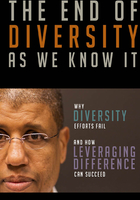
We Can’t Seem to Learn
For corporate stakeholders who really want change that takes advantage of diversity, what’s especially discouraging is that the vehicles for learning how to do so are typically ineffective. Alexandra Kalev, Frank Dobbin, and Erin Kelly examined the effectiveness of various diversity activities in 708 private-sector establishments from 1971 to 2002. They made some surprising discoveries. For example, attempts to counteract managerial bias by providing evaluative feedback typically had no effect on changing the manager’s attitudes or behavior. And diversity training had virtually no effect on changing behavior, frequently generating backlash instead.
For years, efforts to change companies’ demographics to make them more competitive have focused on bringing people from diverse backgrounds into companies and helping them thrive there. Yet executives and managers continue to feel that their goals are unrealized. There is a particular frustration associated with trying to move the diversity needle: many leaders observe that they have been undertaking the accepted best practices for years, but getting very little sustained change. This frustrating situation has produced skepticism about the effectiveness of diversity initiatives of any kind. And it has reinforced deep-seated mistrust between diverse members within an organization.
Perhaps the greatest cost of this wheel-spinning is that the potential advantages of diversity remain largely unrealized. What makes it so difficult for so many companies to gain traction when they attempt to create greater diversity? Why do so many leaders and managers feel frustrated? Why are current approaches to diversity failing?